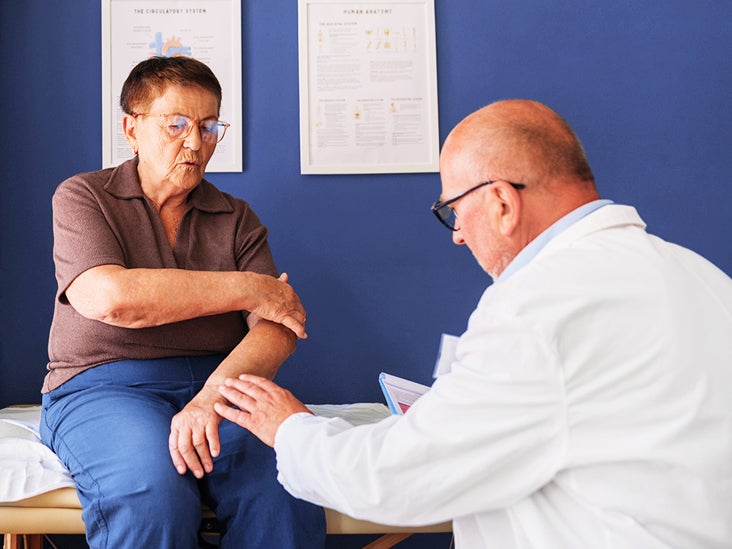Infection
Abscesses: Types, causes, diagnosis, treatment, and more
An abscess occurs when an infection causes a pocket of pus to develop. Abscesses can develop on the skin, in the mouth, or inside the body.
Bacterial infections typically cause abscesses. Pus develops as white blood cells work to fight off the infection and tissue breaks down.
Abscesses are fairly common. More than half of visits to a doctor’s office for skin-related concerns are for abscesses. They do not always need treatment, but a doctor may drain the abscess or prescribe antibiotics in some cases.
Read on to learn more about different types of abscesses and how doctors diagnose and treat them.
Abscesses that develop in the mouth, on the skin, or inside the body have certain characteristics. Treatment will depend on the location and the size of the abscess.
Mouth
An abscess can develop in the mouth on the gums, around a tooth, or in the throat.
A dental abscess can be very painful and is typically linked to gum disease or a cavity. For example, a hole in a tooth or the gums can allow bacteria to enter and cause an infection, resulting in an abscess.
These types of abscesses need treatment. Left untreated, the infection can spread to other parts of the body.
Skin
Skin abscesses can range in size and severity. A skin abscess will feel hard and swollen and may be painful and discolored. It can develop when bacteria that typically live on the skin enter the skin through a damaged hair follicle or cut in the skin.
Some skin abscesses will resolve on their own, but others will need treatment from a healthcare professional.
Internal
Internal abscesses can develop on organs inside the body. This may occur after surgery or as a result of another infection, such as diverticulitis.
They are harder to diagnose because they are not as easily visible as a skin or dental abscess.
Signs and symptoms of an abscess will depend on its location and size. However, the main symptoms include:
- pain in and around the area of the abscess
- discoloration around the edges of the abscess
- swelling
- a hard or soft lump
- a pus-filled center (yellow or white in color)
- fluid leaking from the lump
- tooth pain, if the abscess is in the mouth
- fever
- fatigue and chills, especially for an internal abscess
A bacterial infection, such as Staphylococcus aureus, causes most abscesses. If this bacteria gets into a cut or scrape, a hair follicle, or a sweat gland, it can create an infection.
Staphylococcus aureus lives naturally on the skin of most people. On the surface of the skin, it does not cause problems. However, if it gets into the body, it can cause an infection.
Dental abscesses may occur if there is tooth decay or gum disease. This allows bacteria to enter and cause an infection.
An internal abscess may develop after surgery.
The way a doctor diagnoses an abscess will depend on the location of the infection.
If a person has symptoms of an abscess, a healthcare professional will first do a physical exam. If the abscess is on the skin or in the mouth, a doctor can diagnose it based on its physical appearance and symptoms.
An internal abscess is harder to diagnose. There may be physical signs such as pain or tenderness, fever, chills, fatigue, or generally feeling unwell. To confirm the diagnosis, a doctor can order imaging tests such as an MRI, CT, and ultrasound.
Not all abscesses need treatment.
Skin abscesses may or may not need treatment, depending on the size and extent of the infection. Treatment typically involves cutting it open to drain the infection. A doctor may also prescribe antibiotics.
Dental abscesses always require treatment as they will not resolve on their own. As part of treating the abscess, a person may need one or more teeth removed or a root canal. They will also typically need antibiotics and to address any gum disease, if applicable.
To treat an internal abscess, a surgeon will perform a procedure to drain extra fluid. This removes some of the infection, and a person may take antibiotics to treat it afterward.
It is not always possible to prevent an abscess, but there are steps that a person can take to reduce the risk of developing one.
To help prevent a dental abscess, it is important to practice thorough dental hygiene. This includes regular brushing and flossing and seeking advice from a dental professional as soon as any issues arise. A person should visit their dentist regularly for cleaning and to check for any problems.
To help prevent skin abscesses, it is essential to keep skin clean and wash hands regularly. A person should avoid sharing personal items with others, including toothbrushes, razors, and towels.
Anyone with a skin abscess should monitor the site. It is a good idea to seek care from a healthcare professional, especially if symptoms change or worsen. This is because the infection may require treatment.
Abscesses can develop on the skin, in the mouth, or even inside the body. They occur when bacteria enter the body and cause an infection.
Some abscesses will not need treatment. Others will need to be drained, and a person will need antibiotics to treat the infection.

